‘It’s an unusual model,’ says Mellis Haward, co-director of Archio. ‘It really means those living around the estate or campaigning for the housing have chosen you as a practice. You have a totally different dynamic with the people it’s affecting.’
Haward is referring to Archio’s Citizens House project, 11 genuinely and permanently affordable flats in a single pale grey brick block in Sydenham, developed through London Community Land Trust’s (London CLT) model. In partnership with Lewisham Citizens, Lewisham Council and the Greater London Authority (GLA), it is the first new-build development of this kind in London, ‘directly’ developed by the community for the community using this type of affordability model.
Not only is it an example of decent, solid, well-designed housing on a ‘viable’ budget, the project is also a case study for advocating London CLT’s vision: affordable housing for the ‘intermediatory Londoner’ – the term London CLT uses to describe a Londoner on the median income for their borough – and that remains affordable permanently.
Advertisement
London CLT is a community-led, non-profit organisation with nearly 4,000 members, as well as being a socially minded developer working with local people to create affordable homes and community spaces. It grew out of the UK Living Wage Campaign as well as another community organisation Citizens UK’s campaign in the early 2000s for an Olympic legacy that included homes based on the incomes of local people rather than an ‘Alice-in-Wonderland’ definition of ‘affordable’. While the homes campaign wasn’t particularly successful in influencing the London Legacy Development Corporation, a living wage made it to national policy. London CLT retains a relationship with Citizens UK, which brings together different pre-existing groups, campaigning on what’s most important to them – housing included.
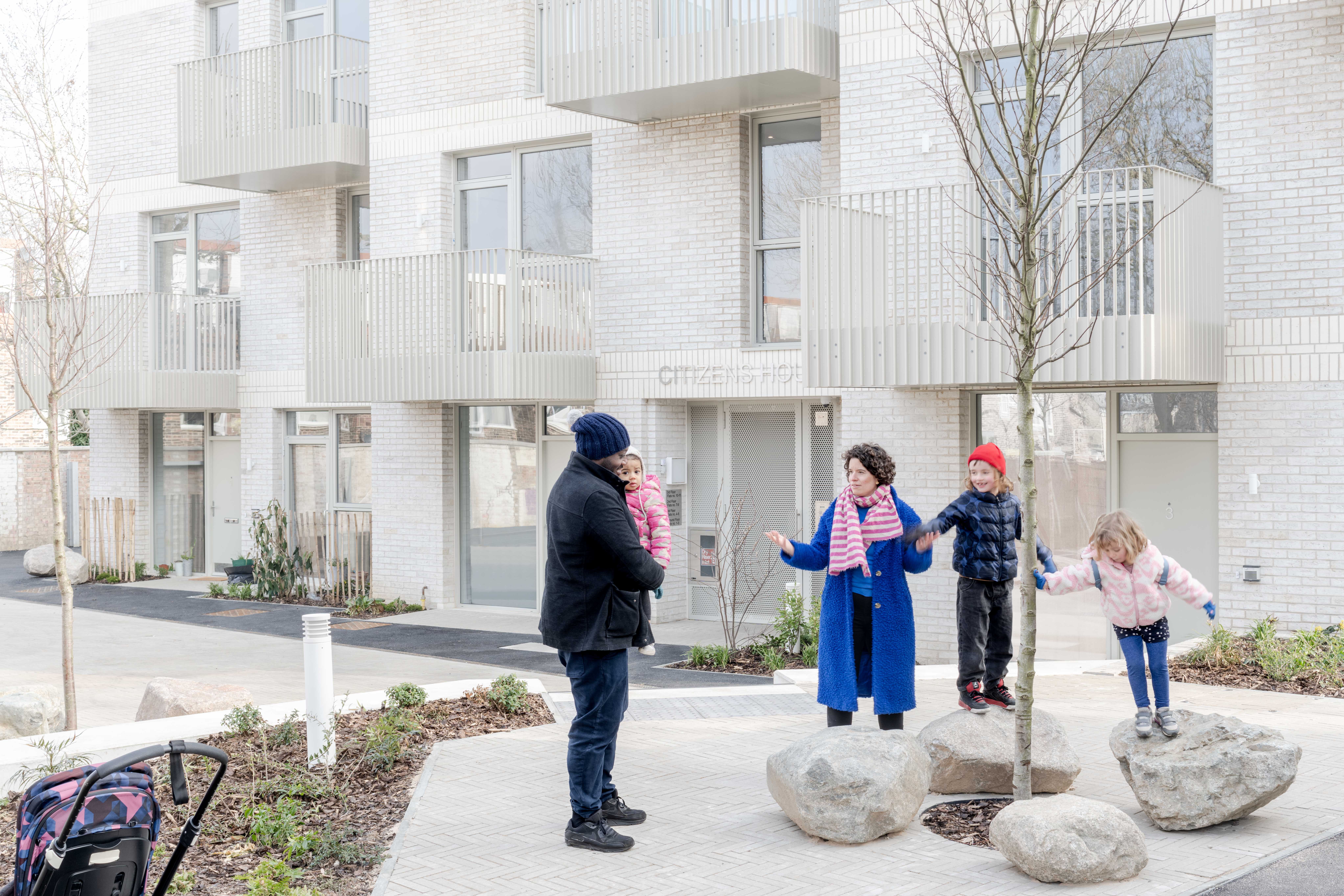
London CLT works to acquire and steward land so that it remains in the hands of the local community in perpetuity. Collaborating with local groups enables them to have ownership of CLTs without having to reinvent the technical and practical know-how necessary to enable delivery. Its model, based on local average income, takes as its precedent policy formed in the US during the Civil Rights movement.
A reaction to the UK housing crisis, London CLT aims to offer a solution, citing land and funding as part of the problem. ‘There doesn’t seem to be a voice for affordable housing in London,’ says its executive director Oliver Bulleid. ‘It’s also in reaction to the current shared ownership model, which is flawed.’
He explains: ‘There is one “affordable” housing model primarily, which the private sector has to subsidise. Yet it doesn’t have the capacity to provide the number of homes we need … We’re a voice in public land rather than private developers calling the shots.’
Citizens House is the second of London CLT’s completed developments, following its first ‘indirect’ project of 23 homes at St Clements in Mile End. This latest one started as a campaign in 2014 through Lewisham Citizens, a subsidiary of Citizens UK. Ahead of the 2014 elections, the mayor of Lewisham and other candidates were asked to find suitable land on which to build community-led homes. When none was forthcoming, London CLT got involved, suggesting the community walk around the area to find vacant sites with potential. Community leaders identified 43 possible sites in the borough, which were subsequently presented to the council.
Advertisement
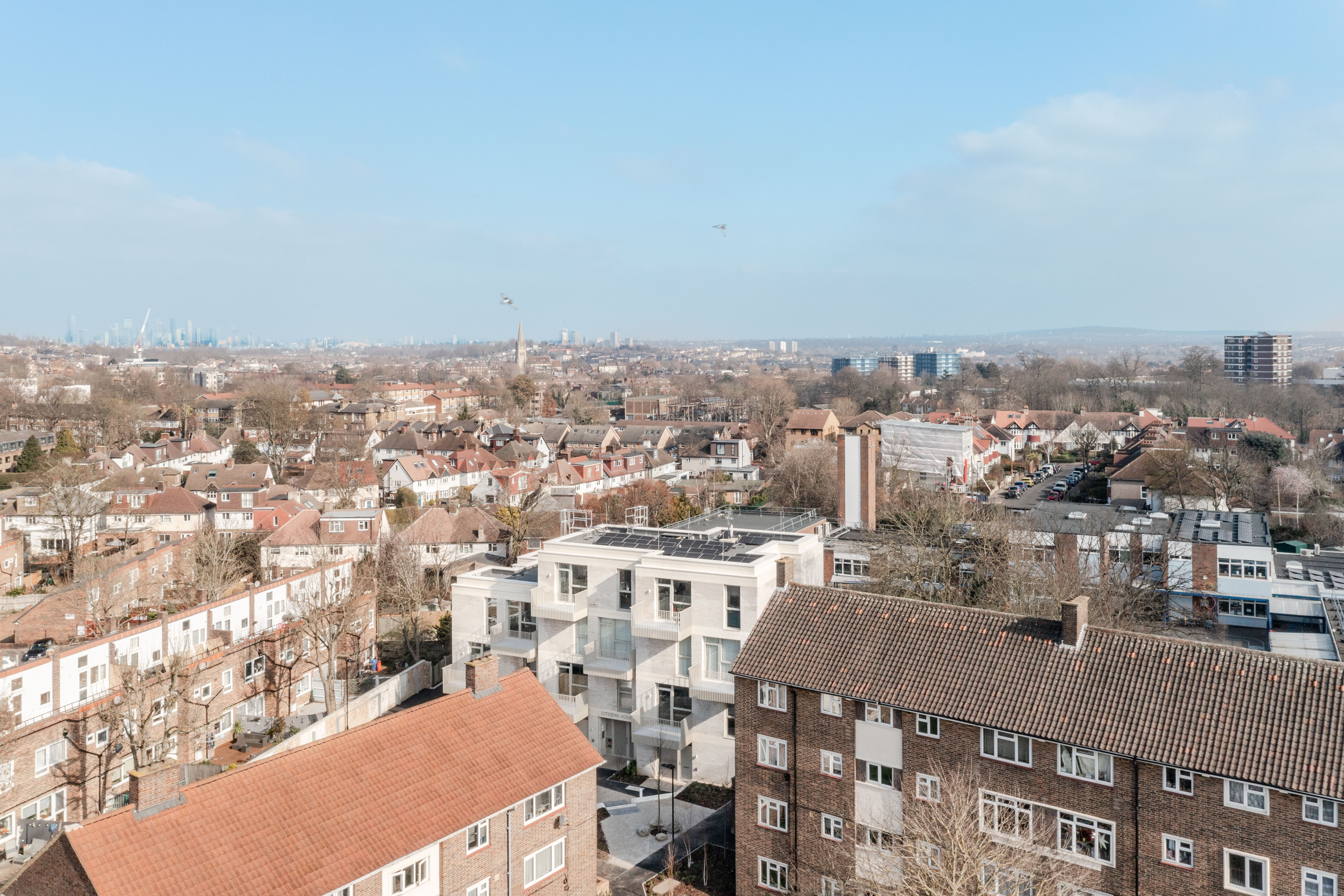
In March 2016, the then mayor of London, Boris Johnson, directed Lewisham Council to start working with Lewisham Citizens and London CLT to develop a residential scheme on a garage site adjacent to the Brasted Close estate – a piece of underused land provided by the council with a 150-year lease at zero cost as part of its Building for Lewisham programme. The council saw this as a pilot site which, if proven to work, could lead to more sites in the future.
Lewisham Citizens and London CLT then embarked on an intensive community-led design process to engage the local Sydenham community in transforming their own neighbourhood, beginning with this small site – kickstarted through a community picnic and followed by open meetings over the following months to engage more residents.
In September 2016, Archio was selected to co-design the housing and landscaping following a vote on a shortlist drawn up by London CLT. ‘When we won the public vote, we felt the first thing we did should be public,’ says Haward. Her practice is well-versed in co-design and has just co-written a book on the topic with architecture communications consultant Rob Fiehn. It started the project by bringing foam cutters, maps, Post-its and models to a temporary on-site office so local people could get involved with making, modelling and drawing ideas in a three-day, open workshop. ‘That’s very unusual, ’ says Haward, ‘as mostly you start a project with a feasibility study and some viability appraisals. It meant the conversation was more nuanced.’
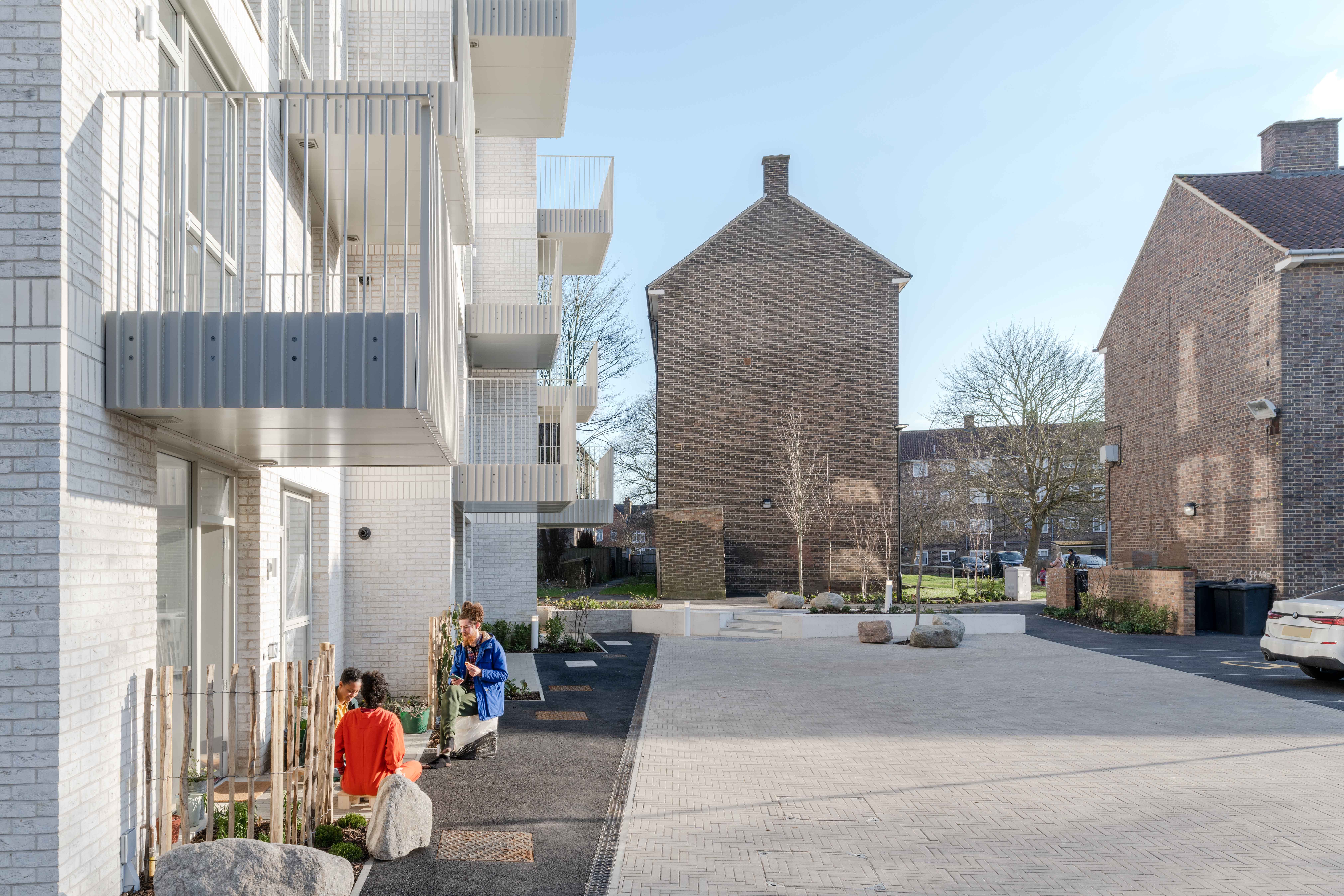
This process of getting to know the site and neighbours – and just listening – moved on to understanding the multiple constraints of the site, contributing to the positioning of the building, the landscaping and how to make the place socially cohesive. One anecdote on how co-design directly affected the result regards the external landscaping. Archio had made assumptions about how the landscaped public space to the front of the building should be – flowers and allotments, for example – only to be met with ‘no, are you kidding? We don’t want that’. Instead, they said ‘let’s have a big, hard-landscaped, piazza-like area for barbecuing and meeting for a chat’, says Haward, pointing to all the underused grassy areas in and around the estate. ‘That’s a lesson to all designers that you’re not always right and you’re not the ones living there.’
After local workshops and collaboration with the council and community to develop designs, proposals were personally delivered for planning in 2018 with 107 letters of support being received for the scheme.
The resulting project is a simple three-to-four-storey building that faces on to a landscaped courtyard. It is located on a highly constrained site, a classic piece of back land with an adjacent primary school, existing gas main, overlooking and public route through. The scheme’s massing has a stepped profile to address the change in height between surrounding developments and has been carefully positioned to fit into the existing estate layout while minimising overlooking to neighbours and the school. It has also been oriented to enhance the pedestrian route on to a new shared public space.
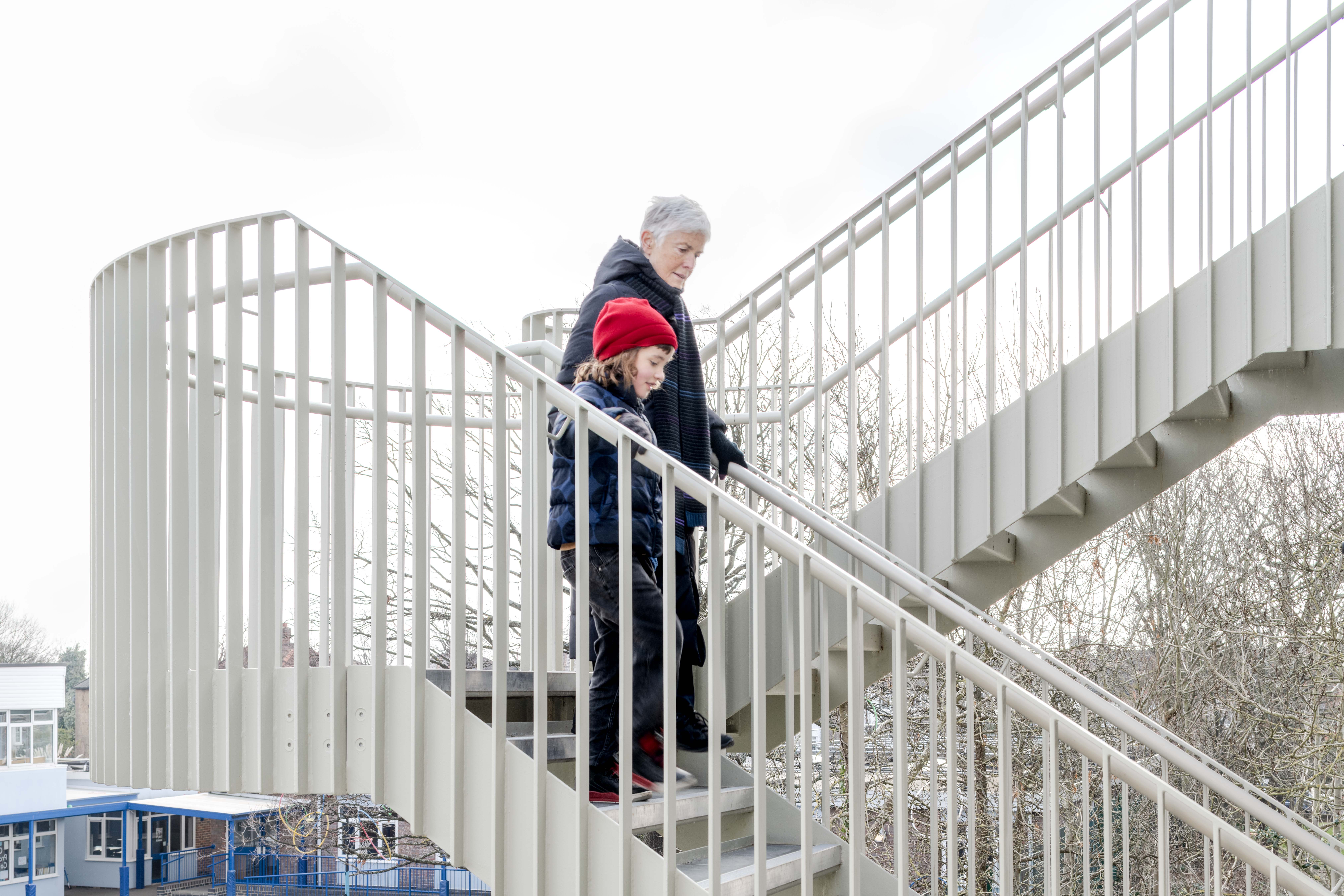
Community cohesion is very important for London CLT, and this is embedded into the design through generous deck access to the rear of the building and staggered balconies to encourage conviviality. The balconies and four ground-floor front doors look over the public space to the front. Residents walk through a spacious communal hall containing bike and pram stores, up a curved winding staircase to reach their homes.
Of the 11 homes, there is one wheelchair access, four one-beds and six two-beds. All are rigorously designed, have plenty of space and are triple aspect. Finishes are relatively simple with residents allowed to choose their kitchens. The school behind – whose playground is overlooked by the scheme – was asked about its concerns immediately. With overlooking the key issue, frosted glazing was applied to bedroom windows. ‘Because we asked immediately, we honed it down to one issue that could be resolved easily,’ says Haward.
The most aesthetically prominent aspect of the building is the way it stands out against London’s vernacular with an unusual and cheap grey brick chosen to give the building its identity. ‘As this was going to be London CLT’s poster child for a while, it needed to be recognisable, strikingly different and have its own character,’ says Haward. ‘So often, cheap infill sites use a murky brown brick and it’s boring!’ On a bright day, the light grey tone of the brick is photogenic. Along with the PVs, plant and maintenance access to the flat roof visible from the ground, it gives the scheme a slightly coastal apartment-block feel, against the monotony of the surrounding estate. ‘We wanted to show we’re excited about the design, not just the affordability model,’ she adds.
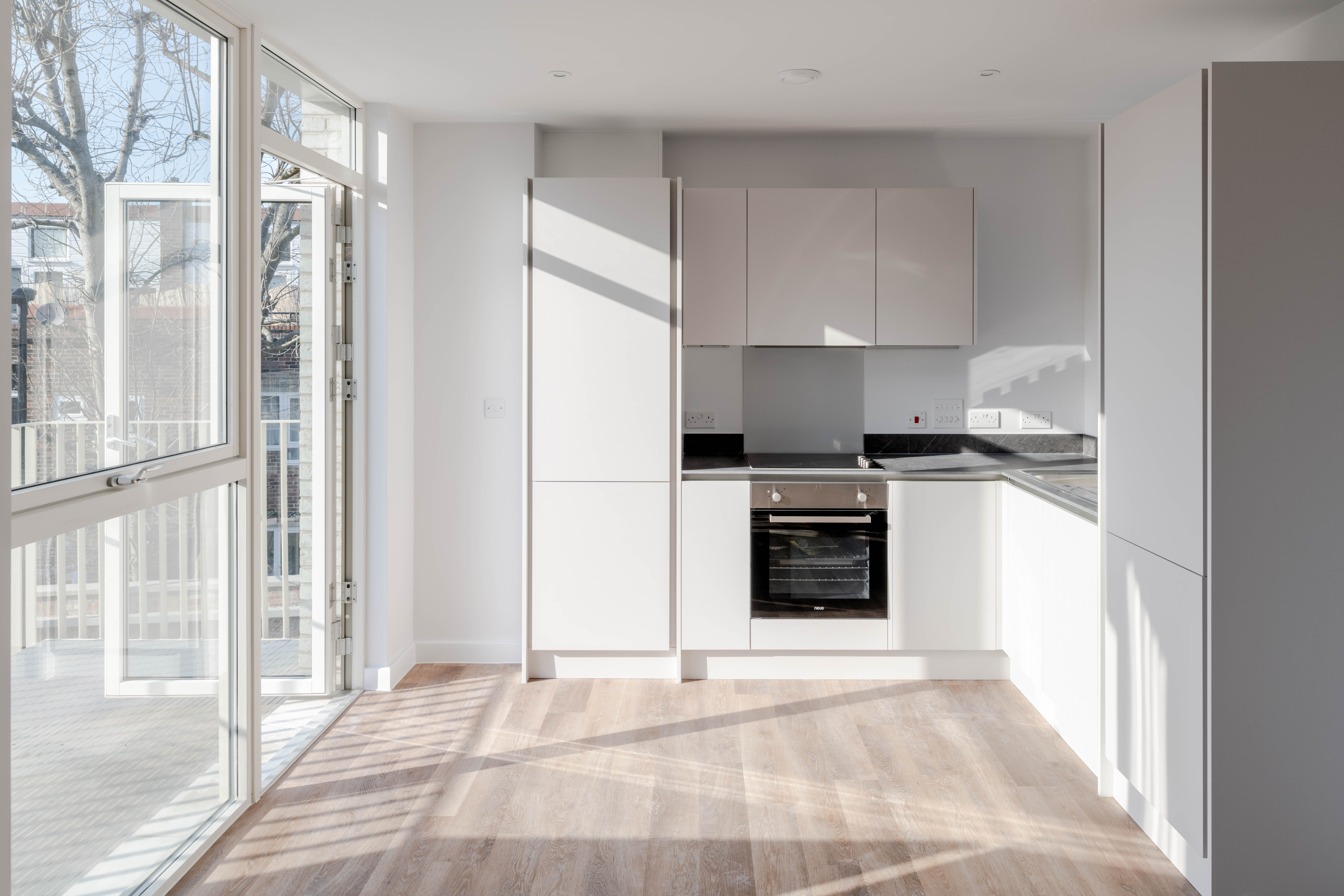
Robust external materials have been used throughout to minimise maintenance. ‘Since day one we’ve known what the homes would sell for so we couldn’t make them more valuable,’ says Haward. ‘Everything had to serve a dual purpose and work hard to make the scheme viable.’
The homes at Citizens House are genuinely affordable because the prices they are sold at are linked to average local incomes based on ONS data. ‘What makes it particularly interesting,’ says Haward, ‘is that the model is providing homes for Londoners who aren’t eligible to be on a housing list yet aren’t able to afford local private rent, let alone market sale.’
The homes are also affordable in perpetuity as when residents move out, they must resell their homes at rates continually linked to local earnings. The idea is to ensure local people don’t get priced out of their neighbourhoods: places they grew up in, work in or have strong connections to. A long-term aim is to improve social cohesion in the area. ‘It means the homes aren’t affected by market rises and crashes,’ says Haward. This market sale model is the only type offered by London CLT at present.
To be eligible for a home, residents are assessed on a series of criteria: affordability bracket, minimum five-year connection to the borough, demonstration of housing need and a commitment to the CLT movement. Over 1,000 people applied for the 11 homes with almost 400 completing the eligibility test. Mortgages are provided by Nationwide Building Society and Ecology Building Society.
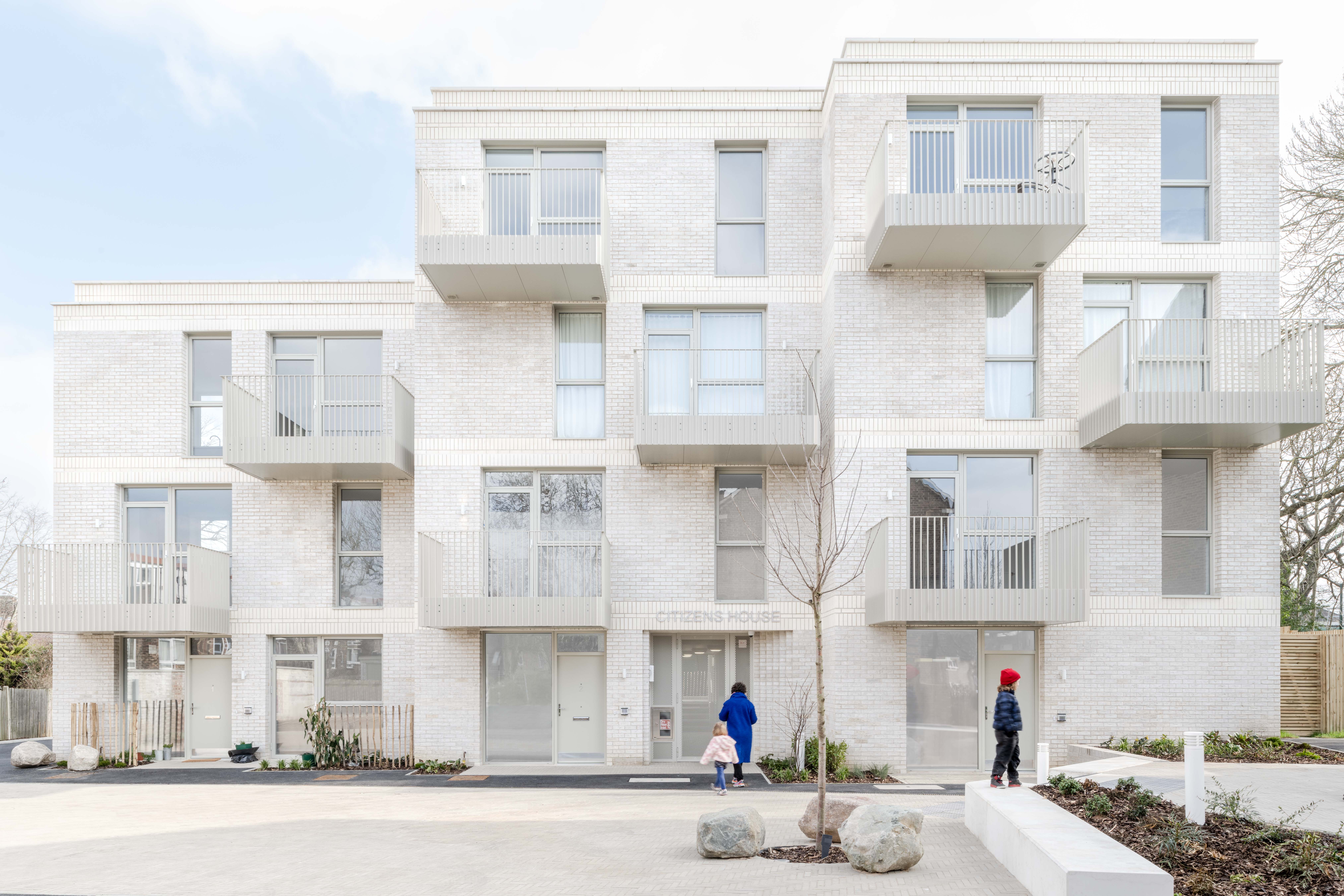
There is some criticism of the model, though. ‘We’ve been hearing more queries now that the project has finished on whether grants, time and energy should be spent on this type of intermediate housing and not just the greatest housing need,’ says Haward, who with Archio is now working on two more London CLT sites in Greenwich. ‘But what London CLT’s campaign has identified is that there’s a particular person experiencing a particular type of affordability issue.’
Seven of the 11 flats at Citizens House have been sold to keyworkers – people valuable to the community who, without this option, would have to move further out of London. ‘They are genuinely from the area for nearly their whole lives and deliver important things to that area,’ she says.
London CLT has built only 34 homes to date. However, it has 10 live projects across six London boroughs and a pipeline of 150-plus new homes in progress – developing a 10-year plan to build 50 homes a year working both with development partners and developing sites itself. Although it doesn’t sound like much when the UK needs housing at scale, its movement is growing. In London, Redbridge has committed to 250 community-led homes, Greenwich and Ealing to 100, while Lambeth and Southwark have made commitments to working with community-led groups. ‘We’ve already proved the concept,’ says Haward. ‘Many more realistic and serious conversations are happening.’
Bulleid adds: ‘There’s potential for 278,000 CLT homes across England in a range of sites that other outfits might not develop – whether it’s indirect or direct development.’ He likens London CLT to the early days of housing associations in the 70s when they started off as grassroots organisations, often small scale, working with local communities, and dealing with difficult issues. Since then, they have had to grow into something different, which doesn’t necessarily reflect the principles they were founded on. ‘If we could perhaps go down the same route but stick with our community roots, you can see there’s an enormous potential for community-led housing to form, let’s say, 10 per cent of overall housing supply,’ he says.
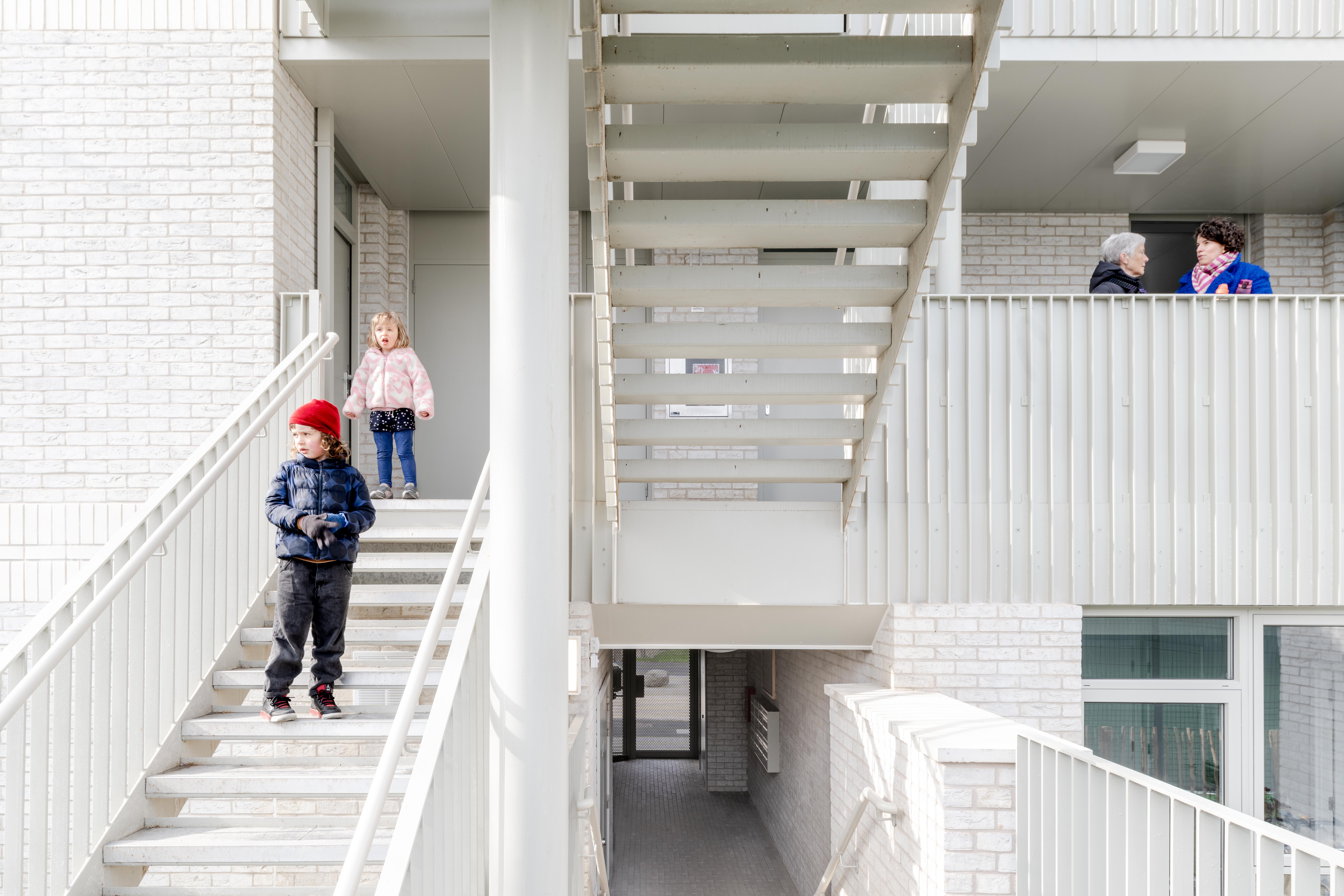
Across the UK’s National CLT Network, there are now 350 CLTs – all in the most unaffordable and deprived regions. And it’s not just in the UK. Just earlier this year, a European CLT launched at the International Social Housing Festival in Barcelona.
‘We can be both our own developer and start to be a voice for an alternative,’ says Bulleid, adding that his organisation is ‘unusual in doing repeat projects’ as a lot of ‘CLTs set up by an interested community often do just one project’. Bulleid spent most of his career working as an architect – including working at Mae and Mikhail Riches – before joining London CLT in 2021. ‘I always enjoyed transforming something and to feel a sense of ownership,’ he says, seeing London CLT as an organisation that enables others, not just architects and developers, to experience the same, with a three-pronged vision of community, housing and self-empowerment.
For both Haward and Bulleid, Citizens House isn’t just a poster child for London CLT, demonstrating grassroots community wealth building, shifting local economies away from centralised decisions by the government and market, to focus on delivering what local people need. It is also an example of rigorous, good quality yet uncomplicated housing that reflects an alternative model of affordability in its design, creating spaces that work as part of the wider neighbourhood and promoting community cohesion. As Bulleid puts it succinctly: ‘housing has no room for excess.’
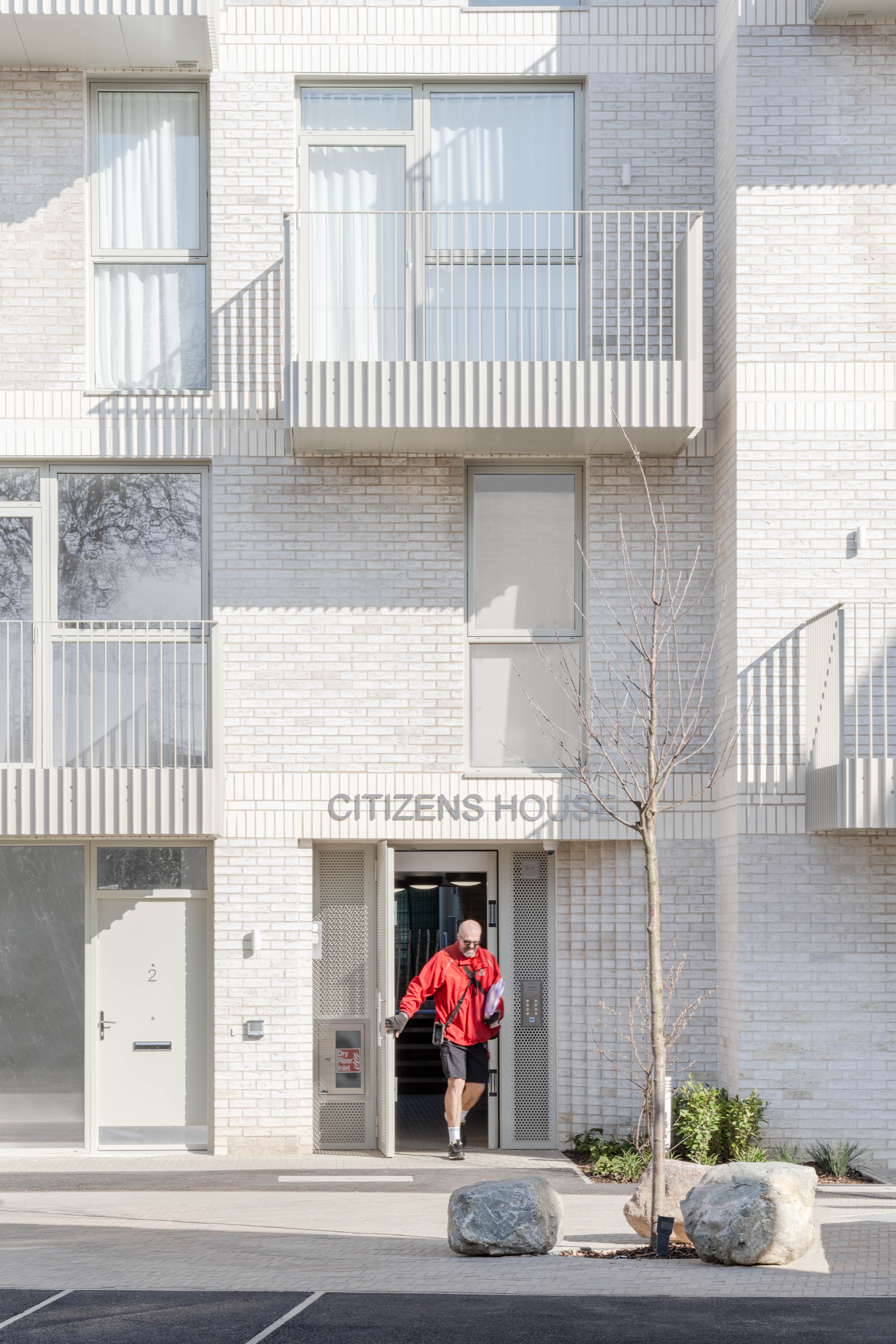
Architect’s view
Low-carbon lifestyle/active travel
The building is in a good location, only six minutes’ walk from Sydenham overground station, and all the local amenities in that town centre. As a result, the design team were able to work with the planners to reduce the required number of parking spaces allocated to the homes from eleven to five.
Secure and covered bicycle parking is provided for all homes, including visitor bike parking. Secure pram stores are also provided within the ground-floor entrance, acknowledging that this is essential for homes that aren’t accessed by a lift.
Creating a safe and well-lit public route through the site has wide benefits for the neighbourhood and was a key point of discussion during the comprehensive community engagement. The site is a well-used public cut-through from Forest Hill to Sydenham, but previously was a dark and dangerous route through garages.
Building construction:
The building achieves 37.2 per cent savings of projected operational energy against the 2013 baseline Building Regulations Part L, partly through the introduction of a 12.7kWp solar photovoltaic array on the main roof.
There was a particular sensitivity to residents’ energy bills. We targeted savings in relation to hot water generation, as this represents a larger proportion of total energy bills within highly thermally efficient homes such as these. Other passive design principles were used such as creating a compact massing to deliver an optimised form factor and using the balconies to provide shading to windows below and to reduce the impact of overheating.
Mellis Haward, director, Archio
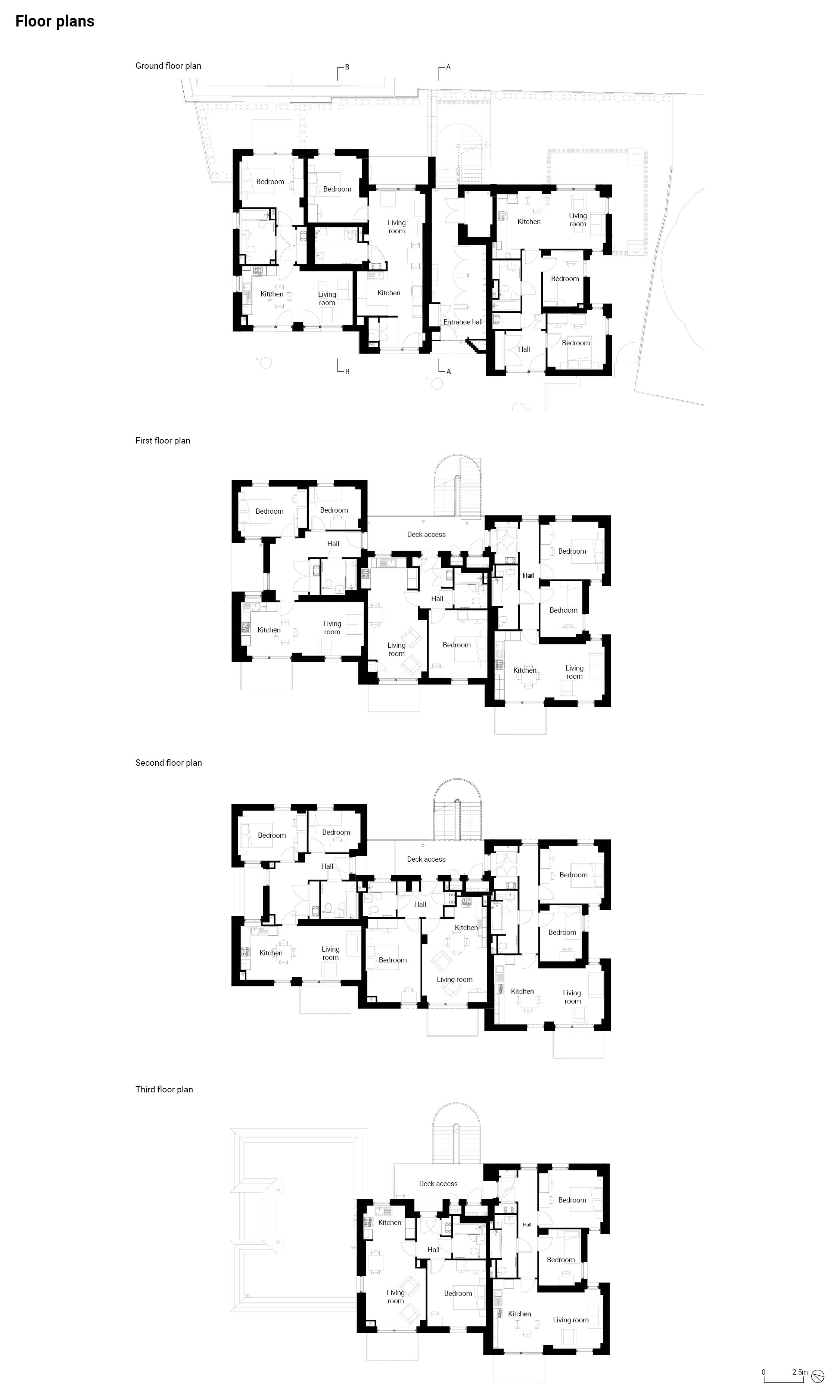
Clients’ views
Citizens House is our first direct housing project and shows that communities working together with support from Lewisham Council and the GLA can identify development opportunities and then make them happen. We are delighted that this project not only provides high-quality new homes but also improves the neighbourhood, and is paving the way for our other developments across London, including 41 homes in Shadwell, 21 Passivhaus homes in adjoining Greenwich, and 31 new homes in nearby Lambeth.
Oliver Bulleid, executive director, London CLT
Citizens House would not be here without a genuine collaboration between Lewisham Citizens, Lewisham Council and London Community Land Trust. I’ve been involved in the campaign from the beginning because I have three children who would struggle to buy a home and live in the borough we all love. Citizens House gives young people the chance to live, work and contribute to Lewisham.
Janet Emmanuel, assistant headteacher, Sydenham School, and chair of the project’s community steering group
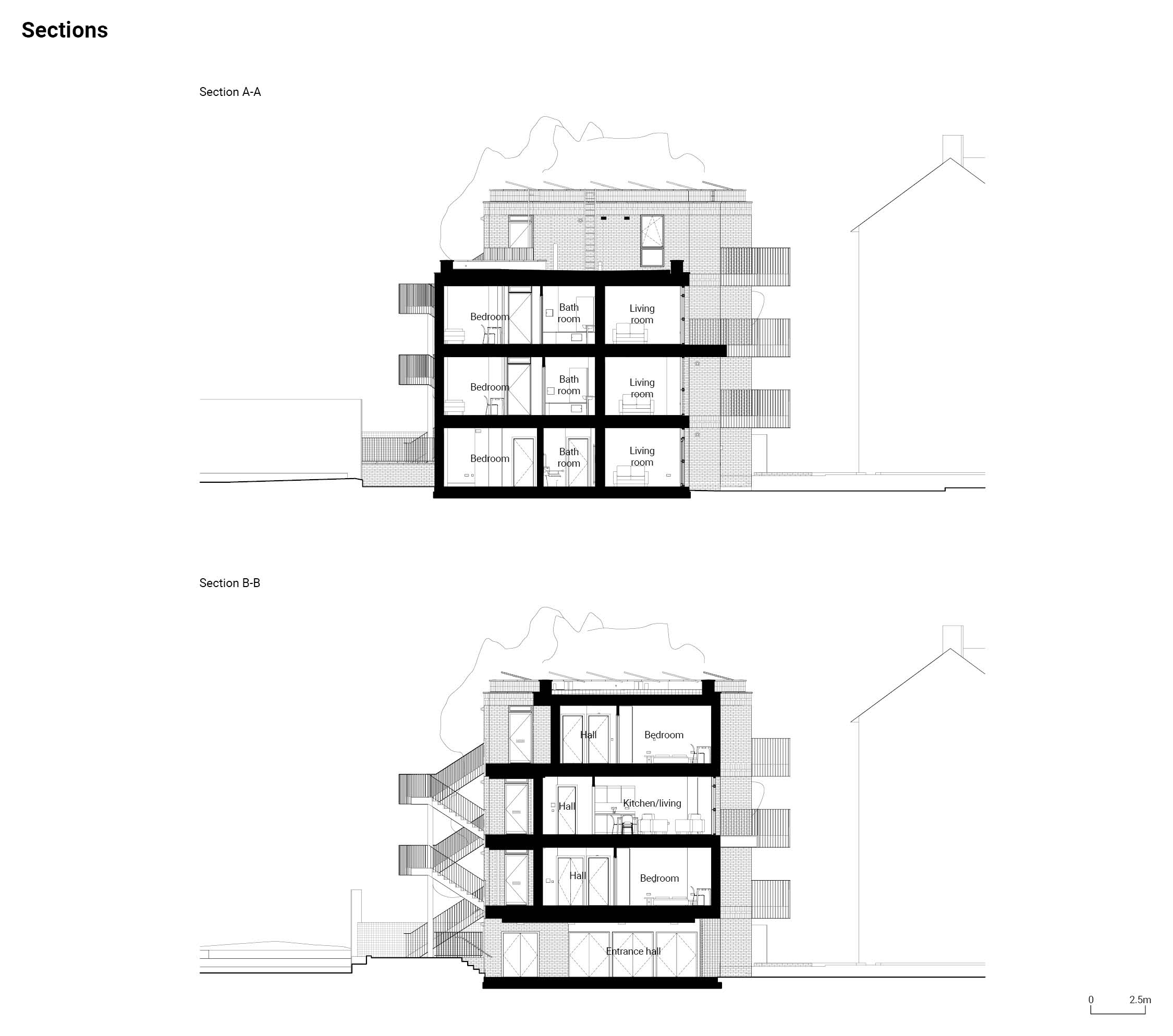
Planning consultant’s view
We were excited to be approached by Archio in 2017 to provide planning services with the view to securing planning consent for the first Community Land Trust (CLT) homes in the capital, to be delivered by London CLT.
The proposals presented several technical challenges due to the site’s limited size, its location at the north-east corner of the Brasted Close Estate and its proximity to neighbouring properties and the adjacent primary school.
These issues were discussed with the local planning authority during detailed pre-application discussions, and input was also sought from the local community as part of the hands-on community engagement process, through which design solutions were identified.
A notable challenge was that the proposed London CLT housing model fell outside of the conventional affordable housing model – the 11 proposed homes met the NPPF and London Plan criteria for ‘intermediate’ affordable housing, though the CLT model was not expressly referred to in the Lewisham Local Plan.
The proposals also failed to meet the Development Plan target tenure split between rented and intermediate housing, as all 11 homes were to be provided as intermediate housing.
However, through ongoing engagement with the local planning authority, and with strong local support for the proposals, together with the public benefits that would be brought by the 100 per cent affordable housing scheme, we were able to secure planning permission for this fantastic scheme which will hopefully be the first of many CLT schemes to be directly developed in London.
Adam Williams, associate director, CMA Planning
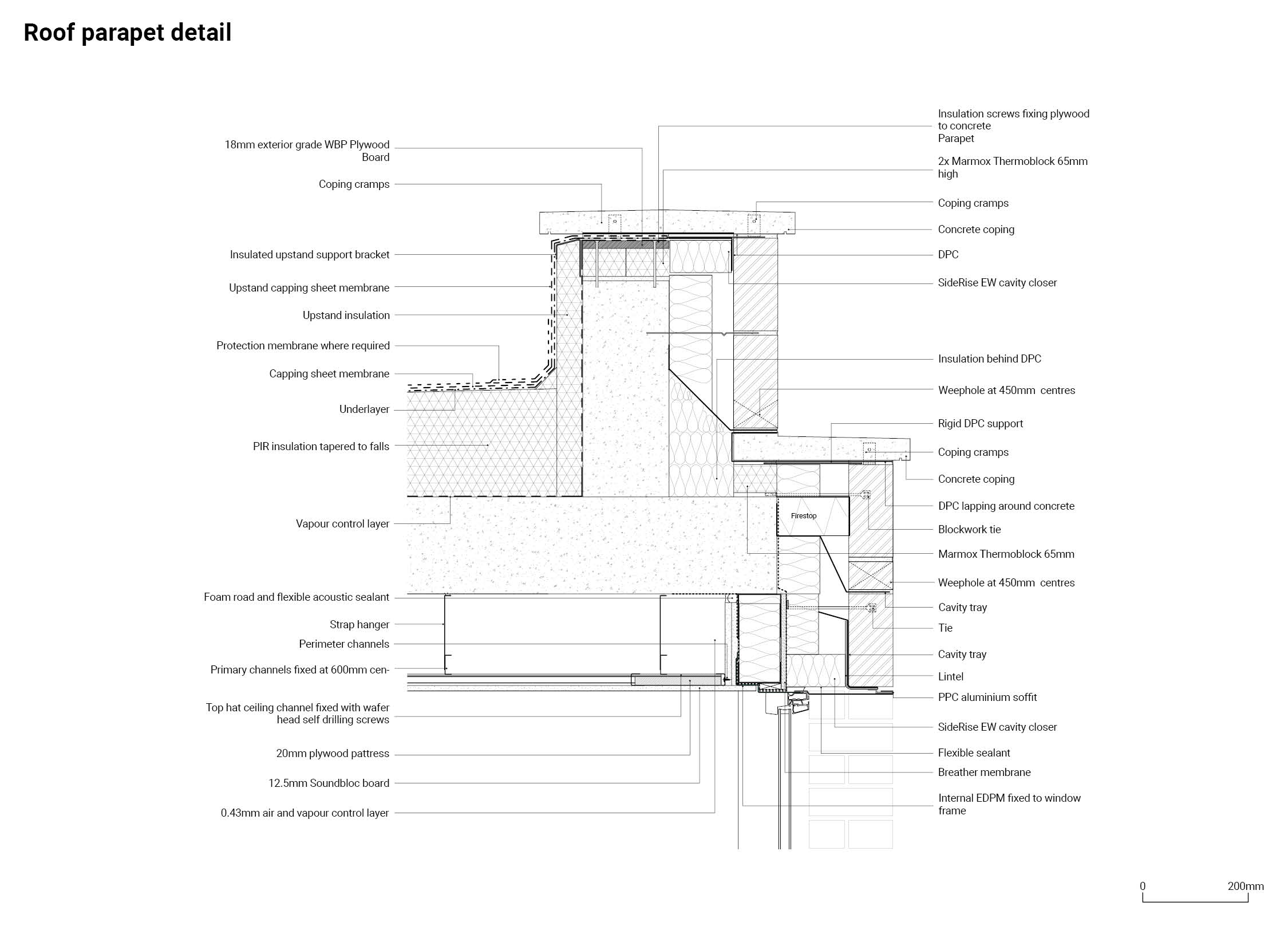
Working detail
The parapet detail was conceived with a setback to reduce the volumetric impact on the surrounding areas. This provides a delicate detail at the top of the building which ties into the horizontal brick banding on the levels below and helps ground the building mass.
The stepping meant that a lot of consideration had to be given to potential for water ingress and thermal bridging. Using damp proof courses (DPCs) as a secondary means of protection under copings, and tying them together and to the weathering membranes, forms an impenetrable secondary level of protection.
Thermal blocks were then introduced to provide backing and support to other sundry items while minimising thermal conductivity. These allowed the raising of the intermediate coping stone from the slab into a level co-ordinated with the brick setting out. They also created support for the DPC to limit sagging under the coping. At the top end of the parapet the thermal block provided a suitable background to friction-fit the cavity closer while allowing mechanical fixings and giving support to the top DPC.
By crafting such a detail, it was possible to realise the design intent within a very tight construction programme. We also reduced construction cost by avoiding non-proprietary thermal breaks. Ultimately, the detail adds elegance, while increasing the building’s fabric resilience.
João Garcia Sá, associate, Archio

Project data
Start on site September 2020 (hoarding), February 2021 (main works)
Completion January 2023
Gross internal floor area 667m2
Total construction cost £2.5 million
Construction cost per m2 £3,748
Architect Archio
Client London Community Land Trust
Structural engineer Stantec
M&E consultant Whitecode Consulting
Quantity surveyor Ian Sayer & Co
Project manager BPM
Principal designer BPM
Approved building inspector Socotec
Main contractor Rooff
CAD software used Revit
Annual CO2 emissions (estimated) 8.3 tCO2/yr for residences, with total emissions of equivalent notional units being 13.8 tCO2/yr, achieving a reduction of 39% of the carbon emissions against Part L 2013, equivalent to 5.4 tonnes per annum
Sustainability data
Percentage of floor area with daylight factor >2% 94.2%
Percentage of floor area with daylight factor >5% 9.3%
On-site energy generation 10.5%
Heating and hot water load 74.4 kWh/m2/yr
Total energy load 100.8 kWh/m2/yr
Carbon emissions (all) 12 kgCO2/m2
Annual mains water consumption <38.3 m3/occupant
Airtightness at 50Pa 5 m3/hr/m2
Overall thermal bridging heat transfer coefficient (Y-value) 0.08 W/m2K
Overall area-weighted U-value Walls 0.23 W/m2K, roof 0.14 W/m2K, floor 0.12 W/m2K
Predicted design life 100 years
 The Architects’ Journal Architecture News & Buildings
The Architects’ Journal Architecture News & Buildings
Leave a comment
or a new account to join the discussion.